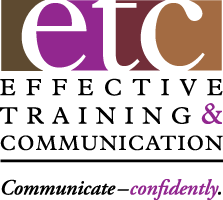I get this question a lot. Before I dive into the answer, let me first explain why I prefer “Elevator Speech” to “Elevator Pitch.” Using the word “pitch” sounds like you’re trying to sell something. No one likes to be sold to or to feel like you are only interested in talking with them to make a sale.
Calling it a “speech” sounds like you want to share some information. Even though the difference in connotation is subtle, it can impact the mindset of the person doing it.
That said, the purpose of an elevator speech is to answer a stranger’s question “What do you do?” in an effective, efficient, and engaging manner. It begins a short, focused dialog. It is important to remember that this is not an invitation for a monologue. The purpose of the dialog is to begin to answer two important networking objectives questions:
1. ‘Is this person someone I or someone I know can help?’ Or,
2. Can this person or someone he or she knows help me?
They’re separate concepts and connected with an “or,” not an “and.” Thinking about it with an “and” implies that you can’t have one without the other. This is simply not true for best-in-class network pros.
Let’s take a look at an example of an effective elevator speech:
Imagine I get in the elevator on my way down from a conference in Key Tower. A fellow conference-goer hops in the elevator with me. She turns to me, takes a look at my conference name tag, and says… “What do you do, Phil?”
“I empower business leaders to reduce their pain when communicating with colleagues or customers by phone, in person, in writing or through presentations… The pain they experience and, often, the pain they cause others.”
Why is it effective? This is a compelling elevator speech because it uses the famous SSCBH approach. OK, we just made this up, but it works. The SSCBH approach calls on you as the deliverer to ensure your pitch is Short and Simple, includes Clear language, has a Benefits-related focus, and includes a clever Hook at the end.
This speech does just that. But I’m not going to only talk about myself. I am going to ask her in return about her and look for a connection between what we both do and how we might be able to help each other. By the time we get down to the lobby, we will exchange goodbyes and business cards. And, chances are good that that elevator encounter won’t be the last time we are in contact with each other.
So, stop pitching in the elevator and start engaging in dialogues. The people you talk with will appreciate the difference and your results will improve.
(Originally appeared in COSE’s ‘Mind Your Business’ on 4/21/2021)
